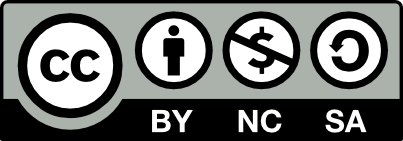Indicator analysis as a way for the Second Department of Polish General Staff to counter the risk of chemical warfare being unleashed by Germany in the 1920s
Wybierz format
RIS BIB ENDNOTEIndicator analysis as a way for the Second Department of Polish General Staff to counter the risk of chemical warfare being unleashed by Germany in the 1920s
Data publikacji: 06.12.2023
Przegląd Bezpieczeństwa Wewnętrznego, 2023, Numer 29 (15), s. 359-372
https://doi.org/10.4467/20801335PBW.23.033.18775Autorzy
Indicator analysis as a way for the Second Department of Polish General Staff to counter the risk of chemical warfare being unleashed by Germany in the 1920s
After regaining its independence in 1918, Poland faced a number of security challenges. The most important of these was survival in the face of revisionist steps taken by aggressive neighbours, including Germany and the USSR. One important aspect of this threat was to determine the risk of the Weimar Republic unleashing chemical warfare against the Second Republic. In order to cope with this intelligence task, the Second Department of Polish General Staff developed a number of instructions whose structure and internal logic is comparable to the indicator analysis technique developed only 60 years later by the American Intelligence Community. On the basis of material preserved in the State Archive in Gdańsk and contemporary textbooks on information analysis techniques, it is shown how officers of Polish military intelligence, decades before the method of indicator analysis was formalised, developed their own way, which is essentially identical to it. This demonstrates the remarkable innovation and organisational capacity of the newly forming intelligence service of the reborn state.
Grunt P., Structured Analytic Techniques: Taxonomy and Technique Selection for Information and Analysis Practitioners, “Journal of Management and Financial Sciences” 2017, vol. 10, no. 30, pp. 115–136.
Heuer R.J., Pherson R.H., Structured Analytic Techniques for Intelligence Analysis, Washing- ton 2011.
Kozłowski J., Teoria i praktyka działań analityczno-informacyjnych (Eng. Theory and practice of analytical and information activities), Warszawa 2016.
Pherson R.H., The Five Habits of the Master Thinker, “Journal of Strategic Security” 2013, vol. 6, no. 3, pp. 54–60.
U.S. Government, A Tradecraft Primer: Structured Analytic Techniques for Improving Intelligence Analysis, 2009.
Черкасов А.А., Рябцев А.А., Меньковский В.И., «Атака мертвецов» (Осовец, 1915 г.): миф или реальность, „Былые годы” 2011, no. 4 (22), pp. 5–11.
State Archive in Gdańsk, Organizacja wywiadu i instrukcja (Eng. Intelligence organisation and instruction), ref. no. 1107.
Institute of National Remembrance, Śladami powstania wielkopolskiego. Bitwa pod wiatrakami i inne potyczki (Eng. In the footsteps of the Wielkopolska Uprising. The Battle of the wind- mills and other skirmishes), https://pw.ipn.gov.pl/pwi/historia/przebieg-walk-powstancz/sladami-powstania-wielk/8464,BITWA-POD-WIATRAKAMI-I-INNE-POTYCZKI.html [accessed: 5 VI 2023].
Informacje: Przegląd Bezpieczeństwa Wewnętrznego, 2023, Numer 29 (15), s. 359-372
Typ artykułu: Oryginalny artykuł naukowy
Akademia Sztuki Wojennej, Warszawa
Polska
Publikacja: 06.12.2023
Status artykułu: Otwarte
Licencja: CC-BY-NC-SA

Udział procentowy autorów:
Korekty artykułu:
-Języki publikacji:
AngielskiLiczba wyświetleń: 348
Liczba pobrań: 250